Kavoklave Factory Service Manual
This Kavoklave Autoclave Factory Service Manual Includes:
- Technical Data
- Mechanical Repair
- Electrical Repairs
- Calibration
- Fault Diagnosis
- Tools and Test Equipment
- Parts List
Technical Data
Continuous operation, with intermittent use.
Electronic system is set to hold a minimum 121°C for 16 minutes (except 210006), 126°C for 11 minutes or 134°C for 3.5 minutes
when loaded with instruments.
On model 210006 the electronic system is set to hold 121 °C minimum, for 18 minutes when loaded with instruments.
All sterilizing times incorporate a safety margin between 0.5 and 1 minute depending on the operating temperature.
Nominal operating pressures are 1.05 Bar (15 psi) at 121°C, 1.6 BAR (23psi) at 126°C, and 2.2 BAR (32 psi) at 134°C.
Minimum vessel burst pressure is 7.8 Bar (115 psi).
Safety features
- Pressure Release Valve
- Lid Pressure Interlock
- Gasket Offset Device (Prevents Rressure Build-Up If Lid Not Closed Correctly)
- Body Thermal Fuse
- Boil Dry Detector
- Gasket Extrusion Slot For Pressure Relief
- End Of Cycle Buzzer
- Bi-Metallic Air Bleed Device Fitted
Pressure and temperature gauges available on some models
Depressurization Valve Kit
Part #KVK043-4111 (OEM Part #219711)
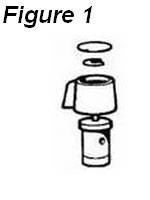 Circlip In Valve Handle.
Circlip In Valve Handle. To replace the circlip, remove the decal and push up the valve stem. The circlip may now be removed / replaced
To replace this valve, remove lock nut from inside the lid with a 13mm spanner and lift out complete valve
(Fig.1). Replace the valve with new one. Ensure cutouts in the aluminium valve body fit into notches on top
handle.
Always replace the seal when refitting the valve. These locate the valve in position
Tighten nut to 10Nm.
PRESSURE INDICATOR
To remove this indicator, locate M16 hexagonal nut in a socket and use the specified tool to undo the red cap.
(For tool kit see 6: Tools and Test Equipment).
GASKET OFFSET DEVICE
The gasket offset device (GOD spring) is a very important safety device. It ensures that if the lid is incorrectly fitted
pressure cannot build up.The spring is forced away from the gasket by the body lug as the lid is rotated. The
spring allows the gasket to seal when the lid and body lugs are in a half lug engagement or better interlock position.
Gasket Offset Device Cover
Part #KVC019-4118 (OEM Part #219577)
This device must be inspected monthly
To work correctly the spring must be firmly riveted to the lid. It must protrude on the inside of the lid, past the
flange by a minimum of 1mm (with gasket removed). See figures 3 and 4.
A new spring cannot be fitted without the correct factory equipment, spring and riveter.
If the spring or rivet is damaged a new lid must be fitted.
Procedure to correct GOD Spring setting
If the limits are outside the specification, then the GOD spring has to be adjusted using long nose pliers
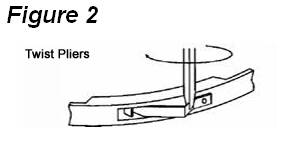
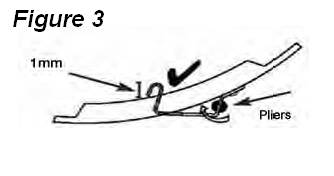
Ensure the lid is flat and stable and apply the pliers vertically. Locate the pliers onto the back edge of the spring
and twist inwards carefully. Do not buckle the spring. Check visually and measure the distance again.
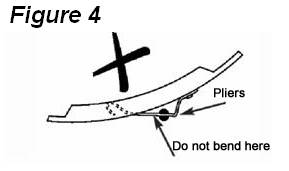
Remove the lid and gasket to ensure that the spring is protruding from the edge of the flange by 1 mm. (Fig. 5.).
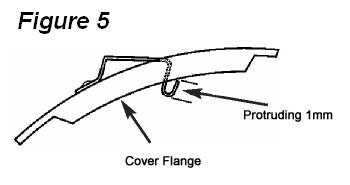
SIDE HANDLES, TOP HANDLE and STEAM DUCT
Side handles are held in place by M5 securing screws.
To remove the top handle, first remove the steam release valve as previously described, (Fig 1.)
Unscrew the side handles.
Once the top handle is removed the steam duct can be removed by releasing the two retaining pins.
After removal the steam duct will need to be replaced with a new one. Insert the two pins into the appropriate
holes in the lid and secure in place by melting the ends using the tip of a hot soldering iron, ensuring that the
pins cannot pass back through the holes.
Replace new side handles and top handle following the reverse of the sequence previously described.
New seals must always be used when refitting the top handle, steam duct and steam valve.
Handle
Part #KVH034-4119 (OEM Part #219696)
Handle Moulding
Part #KVH035-4120 (OEM Part #219698)
AIR BLEED DEVICE
To remove, first take off steam release valve and top handle as previously described (on the 210134 and 210006
you need to remove the steam duct as well). Break off retaining clip and throw away old assembly. (Never re-use
assemblies). Fit new air bleed device with âOâ ring, push into lid hole, place washer over valve stem and force
âpush fixâ down to lock the device in position. Use special tool to push clip over air bleed device spigot.
(For tool kit see 6: Tools and Test Equipment).
Air Bleed Kit
Part #KVK002-4098 (OEM Part #219202)
LID GASKET
Simply extract the old gasket from the lid flanges and replace with a new one.
Only genuine Prestige Medical parts to be fitted.
Note: No lubrication is required for the gasket.
However, if the lid is difficult to put on, Vaseline (petroleum jelly) can be lightly smeared around the edge and
underside of the body flanges.
Door Gasket
Part #KVG001-4114 (OEM Part #219500)
BASE MOULDING
Place body on a flat surface upside down. Then remove the three âposiâ screws, which hold the electronic
module in place
Lift out heatsink to remove module from base moulding. Disconnect the display ribbon cable connector.
Next, remove the earth wires from the body stud, then loosen the nut for the thermistor wire clamp (All M5 size).
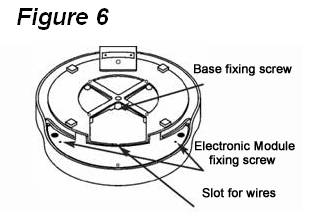
Disconnect the push on terminals from the wiring of the base and the heater element.
The electronic module is now free (Do not remove the thermistor fixing nuts).
Next, remove the fixing screw M5, in the centre of the base moulding and pull off the base moulding complete
whilst feeding the module between the moulded support legs.
Replace the base moulding with a new one in reverse order. DO NOT OVER TIGHTEN SCREW (2.5Nm
torque). Check to ensure the silicone caps are in position
Make Sure No Wires Are Trapped Between The Base and The Body
Ensure the thermal fuse is in contact with the base, making sure the white putty supporting the thermal fuse is
replaced
Refitting is in reverse order of the above. The M5 nuts should be tightened to 1 .4Nm. Note:
- Each earth wire must be fixed to the body stud with a nut (2 wires and 2 nuts)
- An earth insulation test must also be carried out
- Apply new feet if necessary
- Do not forget to transfer the rating plate
- Ensure that the wires between rear mains inlet and module are retained in the location slots provided
- Always check that the push on connectors are tight and do not show signs of overheating
Base Kit (110 VAC)
Part #KVK028-4100 (OEM Part #219665)
THERMAL FUSES
The thermal fuse is in the base moulding, to gain access to this part, remove the base as previously described.
The thermal fuse is in the brown wire and must be replaced as a complete assembly with wires and terminals (Fig 7)
Do not replace the fuse only, as this cannot be reconnected to the brown wires without a proper crimping tool
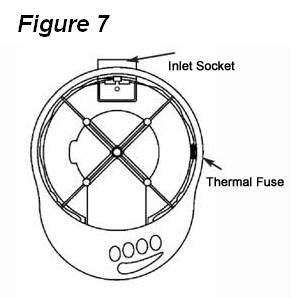
Thermal Fuse
Part #KVF029-4135 (OEM Part #219667)
MAINS INPUT SOCKET
Remove base as previously described and remove push on terminals from input socket (Fig.7)
Remove fixing screws from the socket
Fit new socket and refit base in reverse order
Always check that the push on connectors are tight and do not show signs of overheating
ELECTRONIC CONTROL (COMPLETE)
Place body on a flat surface upside down. Then remove the three posi screws, which hold the electronic
module in place
Lift up the control module (complete) and disconnect the push on terminals from the wiring of the base and
element (as previously described)
Disconnect display ribbon cable. Remove thermistor wire cleat. Remove 2 x M5 nuts on earth stud
Remove both M5 thermistor pocket retaining nuts. Control module may now be removed
Note:
- Clean away all the silicone heat sink compound
- When refitting thermistor pocket, apply compound to base of the body centrally between studs (small quantity
of compound - 3mm bead size)
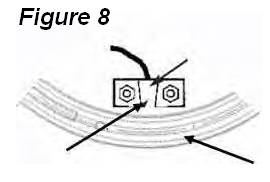
Position Thermistor pocket to create gap - min O.5 mm; max 1 mm - between pocket & element
- Refit module in reverse sequence for removal including replacement of white putty under the thermal fuse
- The tightening torque for M5 studs is 1 .4Nm
- After calibration fit new decal
- Always check that the push on connectors are tight and do not show signs of overheating
LED Switch BOARD
Follow directions for removing Electronic control as perâbase moulding removalâ
Remove the three âpoziâ screws, disconnect the ribbon cable and take the LED Switch board out
LED/Switch Assembly
Part #KVA024-4125 (OEM Part #219585)
Module Kit (110 VAC)
Part #KVK025-4129 (OEM Part #219590)
PRESSURE GAUGE & TEMPERATURE GAUGE
To replace a damaged or faulty pressure gauge, the 1/4 BSP nut must be removed
To replace a damaged or faulty temperature gauge the 3/8 BSP nut must be removed
The gauge to lid seal is provided by a knife edge machined onto the gauge boss. On a stainless steel lid an
aluminium washer is required to complete the seal
The lid must be inspected to ensure there is no damage in this area
There should be an unbroken indented ring around the hole
Care must be taken to ensure the knife edge seat on the replacement gauge is not damaged. On stainless steel
lids always replace the aluminium washer when replacing a gauge. The gauges must be correctly orientated
(nuts to be re-tightened to 35Nm.)
Note: Entry port may be removed by undoing the locknut. Ensure knife edge seal is not damaged and that
there is a continuous seal indent in the lid
THERMOCOUPLE ENTRY PORT (1/4 BSP)
This device consists of connector body, locknut (25mm across flats) and a 3/8 BSP plug (fitted with an âOâ ring)
This assembly utilises a knife edge seal to lid
The purpose of the entry port is to enable a qualified engineer to fit a thermocouple pressure probe to check the
calibration of the autoclave
Thermo Port
Part #KVP048-4136 (OEM Part #219750)
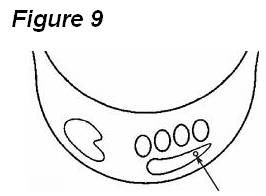
Fill to water level with de-ionised/distilled water (0.75L). Put on the test lid with pressure gauge and digital thermometer
connected. Then open the vent valve
Place the furniture appropriate for the model in the chamber
Press start button
Note: Pressing the Start Button when the Yellow sterilizing light is illuminated will automatically set the
electronic timer to zero and re-start the sterilizing cycle timer
Orange heating light should be on
When temperature of 105°C is reached, close valve
After about 10 minutes from the start time, the sterilizing light should be lit with the heating light pulsing
When the sterilizing light has been on for 5 minutes the temperature should be stabilised at between:
121°C Autoclave 125.5°C to 126.5°C
126°C Autoclave 128.0°C to 129.0°C
134°C Autoclave 136.0°C to 137.0°C
Note: On the 134°C autoclave it will be necessary to press the start button after 2 minutes to reset the
sterilizing timer
If this temperature is too low, turn the pot trimmer clockwise one click at a time to increase the temperature by
0.5 to 1.0°C, allow 1 to 2 minutes for the temperature to stabilise on thermometer
Press start button after each adjustment to reset timer
If the temperature is too high, turn the pot trimmer anti-clockwise one click at a time, open the steam release
valve for 1 to 2 seconds to drop the temperature quickly
Note: It is important that the temperature is dropped below target value before vent valve is closed
When the temperature is stable, switch of and vent with the steam release valve for 1.5 minutes until the
temperature is 105°C to 110°C, close the valve and switch on and start another cycle
FINAL TEST FROM COLD:
- Check water level, put furniture in the chamber together with a sterile indication (T. S.T) strip
- Fit product lid, close vent valve and start a cycle. Check the heating light, note the cycle time
3.5 minutes, 11 minutes, 16 minutes or 18 minutes minimum depending on sterilizing temperature (see page 2 for details)
- Check that the sterilizing light goes out after cycle complete light comes on
- Buzzer should sound when the cycle ends
- When cooled down, check the TST indicator strip has changed from yellow to purple/blue
Note:
If the autoclave is in an ambient temperature of 0°C or less, it will not start a heating cycle. In the
event of this occurring, warm up autoclave by moving to another room or add hot water.
(Donât forget to empty and refill with de-onised / distilled water).
TROUBLESHOOTING THE KAVOKLAVE AUTOCLAVE
| Illustration |
Symptom |
Cause |
Solution |
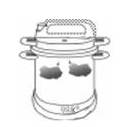 |
Steam or water leaking from the lid of the unit |
Worn or dirty gasket
Incorrectly fitted lid |
Wash gasket - replace in lid. If fault persists, replace with new gasket Part #KVG001-4114
Remove lid Part #KVL046-4126 and replace correctly |
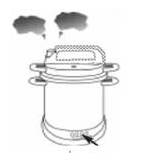 |
Excessive steam or water leaking from the depressurization valve |
Valve in open position
Worn spring in valve
Blown Fuse
Defective Socket |
Close valve
Replace Valve Part #KVK043-4111
Check/Replace Fuse Part #KVF029-4135
Check power to Socket
Part #RPR710-4097
Ensure Lead Connected |
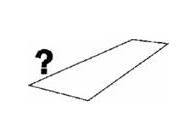 |
TST Strip not changing color |
Unsatisfactory Cycle |
Check expiry date on TST Strip Box OEM Part # 259277
Disconnect from Mains.
Re-connect & Repeat Cycle
If still unsatisfactory arrange service |
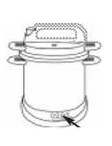 |
Red Fault Light Flashes |
Insufficient Water |
Allow unit to cool & refill to correct level
Disconnect from mains
Reconnect & repeat cycle
If the water level is okay disconnect from mains, reconnect & repeat cycle
If still unsatisfactory arrange service |
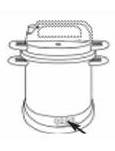 |
Green sterilization light fails to illuminate |
|
Disconnect from mains, reconnect & repeat cycle
If still unsatisfactory arrange service |
TOOLS & TEST EQUIPMENT
The following tools will be required in servicing/repairing the autoclave:
STANDARD TOOLS
- Torque wrench (10 to 45 Nm)
- Torque wrench (0.7 to 1.4 Nm)
- No 1 Pozidriv
- No 2 Pozidriv Socket 26mm Socket 20mm Socket 18mm (long reach)
- Socket 16mm Socket 14mm Socket 13mm Socket 8mm (long reach)
-
- Various socket adaptors to mate up with torque wrenches
- Long nose pliers
- Sharp knife
SPECIAL TOOLS
- Available as a tool kit, reference OEM Part #219287 for Prestige Classic 210006
- M5 nut runner
- Air bleed push fix
- Potentiometer trimmer (flat bladed jewellers screwdriver)
- Pressure indicator driver
TEST EQUIPMENT
- Continuity tester
- Temperature probe (3mm o/d)
- Maximum Registering Thermometer Part #RPT113-3699
N.B Ensure all your test equipment has a current calibration certificate
This Kavoklave Factory Service Manual Brought To You As A Courtesy From AllClaveParts.com